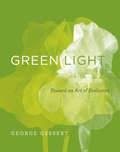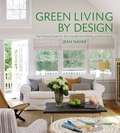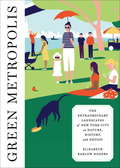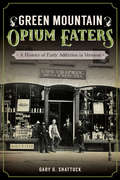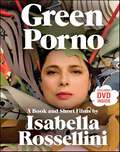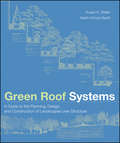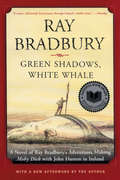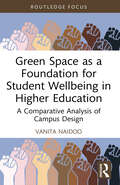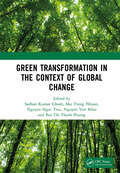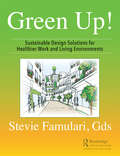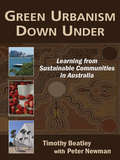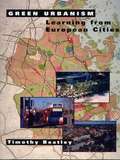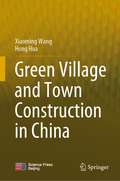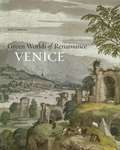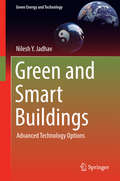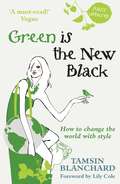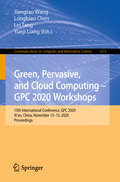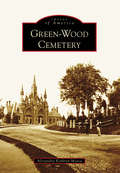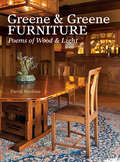- Table View
- List View
Green Infrastructure: Planning Strategies and Environmental Design (The Urban Book Series)
by Angioletta Voghera Benedetta Giudice Gilles NovarinaThis book analyses international Green Infrastructure (GI) planning and design strategies. The GI strategy is widely recognized for its multifunctionality (as a tool for ecological, economic and social enhancement) and multiscalarity. Starting from this assumption, the book intends to implement the concept of GI and blue networks in planning strategies and their linked urban projects. New urban and regional paradigms of the latest years, such as urban sprawl, ecosystem services, biodiversity, urban resilience, climate change and health emergencies, have made it necessary to rethink cities and territories and their related plans and projects. To satisfy these paradigms, worldwide plans and projects have started to focus both on short-term and long-term processes and strategies which integrate environmental, landscape and ecological elements. Chapters 1 and 6 are available open access under a Creative Commons Attribution 4.0 International License via link.springer.com.
Green Interior Design
by Lori DennisAward-winning designer and author Lori Dennis proves interior design can be both stylish and environmentally sustainable in this easy-to-use, entertaining guide. Dennis discusses every aspect of interior design-furniture and accessories, window treatments, fabrics, surface materials, appliances, plants, and more-from a green perspective in terms of reducing waste and pollution and turning a home into a healthy, comfortable environment. Readers will learn how to: - use sustainable materials like bamboo, cork, and recycled glass to enhance interiors - search thrift shops and antique stores for vintage hidden treasures - find the best vendors for purchasing green products - use plants and locally cut flowers to improve indoor air quality and brighten up rooms - replace lawns with indigenous plants and edible gardens - keep rooms clean with effective and nontoxic products - use energy efficient lighting and maximize natural light - apply for different types of green certification. Packed with over 100 color photographs, lists of the best green vendors, and profiles of leading green designers, this book is a thorough guide for anyone who wants to create beautiful interiors while lessening the waste and pollution generated by the building industry.
Green Interior Design: The Guide to Sustainable High Style
by Lori Dennis Courtney Porter"An essential introduction to sustainable domestic design." —Dwell magazineHow to Achieve Style and SustainabilityGreen Interior Design is the most comprehensive guide to sustainable building, designing, and decorating on the market. This beautifully illustrated guide covers every detail of your home—from the drywall to the finial on the curtain rod—and how to find the most environmentally friendly versions of products and décor. This second edition of Green Interior Design is meant as much for the budget DIYer as it is for the luxury homebuilders looking to dip their toes into sustainability. Sprinkled among the chapters, readers will find: Digestible how-tos for quick updatesFun DIY projectsQuick tips on repurposing and upcyclingHelpful resources and buying guidesInspiring home toursUnconventional advice from designers (e.g., &“Don&’t buy anything!&”) We hope readers carry this reference guide with them as they decorate apartments, furnish their first properties, and build their dream homes from the ground up. The second edition&’s interactive structure allows you, the reader, to choose your own adventure: go into the weeds and get granular with purchasing decisions for your home, or take a more generalized approach to your green design project. Whichever path you choose, know that it&’s more important than ever before to act sustainably. &“Going green&” is more than just a trend: It&’s a global economic and social necessity.
Green Light: Toward an Art of Evolution (Leonardo)
by George GessertHow humans' aesthetic perceptions have shaped other life forms, from racehorses to ornamental plants.Humans have bred plants and animals with an eye to aesthetics for centuries: flowers are selected for colorful blossoms or luxuriant foliage; racehorses are prized for the elegance of their frames. Hybridized plants were first exhibited as fine art in 1936, when the Museum of Modern Art in New York showed Edward Steichen's hybrid delphiniums. Since then, bio art has become a genre; artists work with a variety of living things, including plants, animals, bacteria, slime molds, and fungi. Many commentators have addressed the social and political concerns raised by making art out of living material. In Green Light, however, George Gessert examines the role that aesthetic perception has played in bio art and other interventions in evolution. Gessert looks at a variety of life forms that humans have helped shape, focusing on plants—the most widely domesticated form of life and the one that has been crucial to his own work as an artist. We learn about pleasure gardens of the Aztecs, cultivated for intoxicating fragrance; the aesthetic standards promoted by national plant societies; a daffodil that looks like a rose; and praise for weeds and wildflowers.
Green Living by Design
by Jean NayarFilled with easy, insider tips on everything from insulation, carpentry, lighting, and complete renovations to simple projects like redecorating; Green Living by Design is the source for anyone who wants their home to be chic and eco-friendly.
Green Metropolis: The Extraordinary Landscapes of New York City as Nature, History, and Design
by Tony Hiss Elizabeth Barlow RogersElizabeth Barlow Rogers, the woman who launched the restoration of Central Park in the 1980s, now introduces us to seven remarkable green spaces in and around New York City, giving us the history--both natural and human--of how they have been transformed over time.Here we find: The greenbelt and nature refuge that runs along the spine of Staten Island on land once intended for a highway, where mushrooms can be gathered and, at the right moment, seventeen-year locusts viewed. Jamaica Bay, near John F. Kennedy International Airport, whose mosaic of fragile, endangered marshes has been preserved as a bird sanctuary on the Atlantic Flyway, full of egrets, terns, and horseshoe crabs. Inwood Hill, in upper Manhattan, whose forest once sheltered Native Americans and Revolutionary soldiers before it became a site for wealthy estates and subsequently a public park. The Central Park Ramble, an artfully designed wilderness in the middle of the city, with native and imported flora, magnificent rock outcrops, and numerous species of resident and migrating birds. Roosevelt Island, formerly Welfare Island, in the East River, where urban planners built a "new town in town" in the 1970s and whose southern tip is the dramatic setting for the Louis Kahn-designed memorial to Franklin Delano Roosevelt. Freshkills, the unusual twenty-two-hundred-acre park on Staten Island that is being created out of what was once the world's largest landfill. The High Line, in Manhattan's Chelsea and West Village neighborhoods, an aerial promenade built on an abandoned elevated rail spur with its native grasses and panoramic views of the Hudson River and the downtown cityscape.Full of the natural history of the parks along with interesting historical facts and interviews with caretakers, guides, local residents, guardians, and visitors, this beautifully illustrated book is a treasure trove of information about the varied and pleasurable green spaces that grace New York City.From the Hardcover edition.
Green Mountain Opium Eaters: A History of Early Addiction in Vermont
by Gary G. ShattuckThe green mountains, lush valleys and riotous fall colors of idyllic nineteenth-century Vermont masked a sinister underbelly. By 1900, the state was in the throes of a widespread opium epidemic that saw more than 3.3 million doses of the drug being distributed to inhabitants each and every month. Decades of infighting within the medical profession, complicit doctors and druggists, unrestricted access to opium and bogus patent medicines all contributed to the problem. Those conflicts were compounded by a hands-off legislature focused on prohibiting the consumption of alcohol. Historian Gary G. Shattuck traces this unusual aspect of Vermont’s past.
Green Porno: A Book and Short Films by Isabella Rossellini
by Isabella RosselliniFrom the beloved actress Isabella Rossellini comes Green Porno, a strange and enlightening visual exploration of the sex lives of insects and sea creatures, based on the wildly popular short videos of the same name. Co-director Jody Shapiro has taken 125 arresting film stills of Isabella dressed in animal costumes which are the centerpiece of Green Porno and will appear alongside narrative text describing the “love making” process of each animal. Each chapter will also include a quirky, surprising facts about each species.
Green Remodeling
by David R. Johnston Kim MasterWhether because of changing lifestyles or simply because houses are becoming outdated, millions of North Americans are renovating their homes every year, spending more money annually on renovation than on new-home construction. But renovations can be fraught with unintended consequences like indoor air pollution. How do you remodel in a healthy, environmentally friendly way?Green Remodeling is a comprehensive guide. It first points out the advantages of remodeling. Buildings are responsible for 40% of worldwide energy flow and material use; so how you remodel can make a difference. Upgrading furnaces, cabinets and toilets means less fossil fuel pollution, reduced resource depletion and fewer health risks. Green remodeling is more energy-efficient, more resource-conserving, healthier for occupants and creates buildings that are more affordable to build, operate and maintain.The book then discusses simple green renovation solutions for homeowners, focusing on key aspects of the building, including foundations, framing, plumbing, windows, heating and finishes. Room by room, it outlines the intricate connections that make the house work as a system. For example, how new windows may affect the structure and mechanical systems of the rooms below, the health of the family and the future of old-growth forests. Then, in an easy-to-read format complete with checklists, personal stories, expert insights and an extensive resource list, it covers easy ways to save energy, conserve natural resources and protect the health of loved ones. Addressing all climates, this is a perfect resource for conventional homeowners, as well as for architects and remodeling contractors.David Johnston was named one of the top 50 remodelers in the U.S. in 1990. He developed the first green remodeling program in the U.S. and is creating a national green certification program for the National Association of the Remodeling Industry. Kim Master is a green building consultant. Both are from Boulder, Colorado.
Green Roof Systems
by Susan Weiler Katrin Scholz-BarthGreen Roof Systems goes beyond the fashionable green roof movement and provides solid information on building accessible space, often as important public space, over structure. It offers brief coverage of the entire process, including planning and collaboration, and focuses on the technical aspects of these roof systems, their components, and their applications.
Green Shadows, White Whale: A Novel of Ray Bradbury's Adventures Making Moby Dick with John Huston in Ireland
by Ray BradburyIn 1953, the brilliant but terrifying titan of cinema John Huston summons the young writer Ray Bradbury to Ireland. The apprehensive scribe's quest is to capture on paper the fiercest of all literary beasts -- Moby Dick -- in the form of a workable screenplay so the great director can begin filming. But from the moment he sets foot on Irish soil, the author embarks on an unexpected odyssey. Meet congenial IRA terrorists, tippling men of the cloth impish playwrights, and the boyos at Heeber Finn's pub. In a land where myth is reality, poetry is plentiful, and life's misfortunes are always cause for celebration, Green Shadows, White Whale is the grandest tour of Ireland you'll ever experience -- with the irrepressible Ray Bradbury as your enthusiastic guide.
Green Space as a Foundation for Student Wellbeing in Higher Education: A Comparative Analysis of Campus Design (Routledge Research in Higher Education)
by Vanita NaidooThis book presents a unique comparative case study that details the narrative around campus design at the first institutions of public higher education in the United States. With a focus on Southern design at the turn of the 18th century, it explores the use and perception of campus green space and its influence on student wellbeing and belonging, using both structural and lived perspectives.With attention to the post-COVID-19 context, the comparative analysis of two campuses, The University of North Carolina (UNC) at Chapel Hill and the University of Georgia, offers insight into how historical context, location, and design all influence the use of space. The case studies and analysis also serve as examples of how institutions and university systems hoping to engage with design practices can promote positive learning environments that are both inclusive and supportive. Each chapter addresses an experiential aspect of space, linking back to the dialogue on diversity, inclusion, and identity. In addition to considerations around diversity, the book also offers a rich narrative that uncovers the links between American Education and the New Southern Republic, shining a light on the role of place, historical origin, and socio-political circumstances in shaping campus design.A superb resource for scholars and postgraduates studying higher education, environmental psychology, and urban planning, it chronicles the evolution of campus design at public institutions of higher education from a unique historical perspective.
Green Transformation in the Context of Global Change: Proceedings of the International Conference on Green Transformation in the Context of Global Change (GREEN 2024), Hanoi, Vietnam, October 24th–25th, 2024
by Sadhan Kumar Ghosh Mai Trong Nhuan Nguyen Ngoc Truc Nguyen Viet Khoi Huong, Bui Thi ThanhThis book captures the proceedings of the International Conference on Green Transformation in the Context of Global Change (GREEN 2024), organized by the School of Interdisciplinary Sciences and Arts, Vietnam National University, Hanoi. Each of the eight sections in this volume offer an interdisciplinary forum to exchange valuable information and knowledge on green transformation.It emphasizes the need for new, flexible and creative solutions to tackle the enormous challenges of global change such as geopolitical conflicts, climate change, environmental degradation, biodiversity loss, clean water and food shortage, economic instability, poverty, and social inequality.It touches upon several crucial topics, including: Green transformation in the digital transformation context Emission reduction and energy transition Agro-ecology and sustainable food systems It will be a valuable read for researchers and practitioners of waste management, green manufacturing, sustainable development and climate change.
Green Up!: Sustainable Design Solutions for Healthier Work and Living Environments
by Stevie FamulariThere are unique greening solutions and practices that help create a lifestyle shift, improving the health of living and working spaces for its occupants from a personal, business, environmental, and profitable perspective. Short-term and long-term considerations are important elements when moving forward towards healthy practices in lifestyles, choices, and site designs. This book addresses a myriad of greening practices that can be applied to structures in our urban, suburban, and rural cultures. From the loft to the neighborhood, the office spaces to the public spaces, and the schools to the communities, this book outlines how business owners and residents can integrate scale appropriate green solutions into their lifestyles. Green Up!: Sustainable Design Solutions for Healthier Work and Living Environments includes detailed illustrations and photographs to help you understand design opportunities for your space. Stevie Famulari provides unique insights and inspires business owners, residents, and planners to develop their own green understanding and design solutions. Illustrations and photographs of applied greening are included throughout the book to help inspire your own goals and design, and then transform them to reality. The author breaks down the misconceptions of the complexity of sustainability and green practices. Greening is a lifestyle change, and this step-by-step instruction guide lets you know how easy it is to transition to the green side!
Green Urbanism Down Under: Learning from Sustainable Communities in Australia
by Timothy Beatley Peter NewmanIn this immensely practical book, Timothy Beatley sets out to answer a simple question: what can Americans learn from Australians about "greening" city life? Green Urbanism Down Under reports on the current state of "sustainability practice" in Australia and the many lessons that U.S. residents can learn from the best Australian programs and initiatives. Australia is similar to the United States in many ways, especially in its "energy footprint." For example, Australia's per capita greenhouse gas emissions are second only to those of the United States. A similar percentage of its residents live in cities (85 percent in Australia vs. 80 percent in the United States). And it suffers from parallel problems of air and water pollution, a national dependence on automobiles, and high fossil fuel consumption. Still, after traveling throughout Australia, Beatley finds that there are myriad creative responses to these problems--and that they offer instructive examples for the United States. Green Urbanism Down Under is a very readable collection of solutions. Although many of these innovative solutions are little-known outside Australia, they all present practical possibilities for U.S. cities. Beatley describes "green transport" projects, "city farms," renewable energy plans, green living programs, and much more. He considers a host of public policy initiatives and scrutinizes regional and state planning efforts for answers. In closing, he shares his impressions about how Australian results might be applied to U.S. problems. This is a unique book: hopeful, constructive, and filled with ideas that have been proven to work. It is a "must read" for anyone who cares about the future of American cities.
Green Urbanism: Learning From European Cities
by Timothy BeatleyAs the need to confront unplanned growth increases, planners and policymakers scramble for practical tools and examples of successful and workable approaches. Growth management initiatives are underway in the US, but many American "success stories" provide only one piece of the puzzle. To find examples of a holistic approach to dealing with sprawl, one must turn to models outside of the United States.In Green Urbanism, Timothy Beatley explains what planners and local officials in the United States can learn from the sustainable city movement in Europe. The book explores the progress and policies of twenty-five of the most innovative cities in eleven European countries. Chapters examine:*the sustainable cities movement in Europe*examples of different housing and living options*policies for promoting transit and bicycle use and minimizing the role of the automobile*creative ways of incorporating greenness into cities*ways of readjusting "urban metabolism" so that waste flows become circular*programs to promote more sustainable forms of economic development*sustainable design measures and features*renewable energy initiatives and local efforts to promote solar energy*ways of greening local government decisions including ecological budgeting, green accounting, and other city management tools.Throughout, Beatley focuses on the key lessons from these cities -- including Vienna, Helsinki, Copenhagen, Stockholm, Zurich, Amsterdam, London, and Berlin -- and what their experience can teach us about effectively promoting sustainable development in the United States. Green Urbanism is the first full-length book to describe urban sustainability in European cities, and provides concrete examples and detailed discussions of innovative and practical sustainable planning ideas.
Green Village and Town Construction in China
by Xiaoming Wang Hong HuaBy means of multidisciplinary research on urban and rural planning, construction engineering, environmental engineering and engineering sociology, this book conducts pioneering research on the construction theory, construction methods, evaluation technology and application of demonstration projects in China’s green villages and towns. The book is divided into three parts and eleven chapters. Part I is about the theory and development of green village and town construction, including the theory and innovation, the evolution and development, the patterns and mechanisms, and the community of green village and town construction. Part II is about the planning and construction methods of green villages and towns, including the plan compilation, the environmental infrastructure construction, and the construction and renovation of green buildings in villages and towns. Part III is about the evaluation of the planning and construction of green villages and towns, including the evaluation of plans, the evaluation of environmental infrastructure construction, the evaluation of green building construction, and the comprehensive evaluation of the planning and construction of green villages and towns. Today, 564 million farmers live in 28,500 towns and 2.452 million villages in China. In 2018 alone, 820 million m2 of new houses were built in rural areas. This proves that China’s green village and town construction has great significance and can provide enlightenment to developing countries and even to the world. The book describes new theories, new perspectives and new methods of green village and town sustainable construction in China for overseas experts and readers.
Green Worlds of Renaissance Venice
by Jodi CranstonFrom celebrated gardens in private villas to the paintings and sculptures that adorned palace interiors, Venetians in the sixteenth century conceived of their marine city as dotted with actual and imaginary green spaces. This volume examines how and why this pastoral vision of Venice developed.Drawing on a variety of primary sources ranging from visual art to literary texts, performances, and urban plans, Jodi Cranston shows how Venetians lived the pastoral in urban Venice. She describes how they created green spaces and enacted pastoral situations through poetic conversations and theatrical performances in lagoon gardens; discusses the island utopias found, invented, and mapped in distant seas; and explores the visual art that facilitated the experience of inhabiting verdant landscapes. Though the greening of Venice was relatively short lived, Cranston shows how the phenomenon had a lasting impact on how other cities, including Paris and London, developed their self-images and how later writers and artists understood and adapted the pastoral mode.Incorporating approaches from eco-criticism and anthropology, Green Worlds of Renaissance Venice greatly informs our understanding of the origins and development of the pastoral in art history and literature as well as the culture of sixteenth-century Venice. It will appeal to scholars and enthusiasts of sixteenth-century history and culture, the history of urban landscapes, and Italian art.
Green Worlds of Renaissance Venice
by Jodi CranstonFrom celebrated gardens in private villas to the paintings and sculptures that adorned palace interiors, Venetians in the sixteenth century conceived of their marine city as dotted with actual and imaginary green spaces. This volume examines how and why this pastoral vision of Venice developed.Drawing on a variety of primary sources ranging from visual art to literary texts, performances, and urban plans, Jodi Cranston shows how Venetians lived the pastoral in urban Venice. She describes how they created green spaces and enacted pastoral situations through poetic conversations and theatrical performances in lagoon gardens; discusses the island utopias found, invented, and mapped in distant seas; and explores the visual art that facilitated the experience of inhabiting verdant landscapes. Though the greening of Venice was relatively short lived, Cranston shows how the phenomenon had a lasting impact on how other cities, including Paris and London, developed their self-images and how later writers and artists understood and adapted the pastoral mode.Incorporating approaches from eco-criticism and anthropology, Green Worlds of Renaissance Venice greatly informs our understanding of the origins and development of the pastoral in art history and literature as well as the culture of sixteenth-century Venice. It will appeal to scholars and enthusiasts of sixteenth-century history and culture, the history of urban landscapes, and Italian art.
Green and Smart Buildings
by Nilesh Y. JadhavThis book highlights the various technologies that are currently available or are now being developed for the green and smart buildings of the future. It examines why green building performance is important, and how it can be measured and rated using appropriate benchmarking systems. Lastly, the book provides an overview of the state-of-the-art in green building technologies and the trend towards zero energy or net positive energy buildings in the future.
Green is the New Black: How to Save the World in Style
by Tamsin BlanchardFor girls who care about global warming, and next season's hot looks, Green is the New Black is a must-have accessory. Does our shopping addiction contribute to climate change? What's so special about organic cotton? Who are the real fashion victims behind the £3 jeans? From the truth about fast fashion to the best biodegradable shoes, from guilt-free spending sprees to the joys of swishing parties, Tamsin Blanchard is your guide to all things fairtrade and fabulous. She explains the principles of ethical fashion, from why it matters to how to do it. Offers tips for the aspiring green goddess: including how to knit your own scarf, seduction in eco-couture, the best places to shop for vintage sunglasses, and ethical bling. And includes fun facts and essential directories on every aspect of sustainable stylish living. With fashion secrets from celebrity friends, Green is the New Black is the chicest, greenest survival manual around. If you want to change the world, and your wardrobe, don't go shopping without it.
Green, Pervasive, and Cloud Computing – GPC 2020 Workshops: 15th International Conference, GPC 2020, Xi'an, China, November 13–15, 2020, Proceedings (Communications in Computer and Information Science #1311)
by Jiangtao Wang Longbiao Chen Lei Tang Yunji LiangThis book constitutes the refereed proceedings of the Workshops from the 15th International Conference on Green, Pervasive, and Cloud Computing, GPC 2020, held in Xi'an, China, in November 2020. Due to the COVID-19 pandemic this event was held virtually.The 5 full papers presented in this book together with 3 short papers were carefully reviewed and selected from 16 submissions. They present recent research in the areas of urban computing, intelligent transportation and social computing.
Green-Wood Cemetery (Images of America)
by Alexandra Kathryn MoscaFor generations, Green-Wood Cemetery has played an integral part in New York City's cultural history, serving as a gathering place and a cultural repository. Situated in the historic borough of Brooklyn, the thousands of graves and mausoleums within the cemetery's 478 acres are tangible links and reminders to key events and people who made New York City and America what it is today. The monuments read like a who's who of American greatness and include the names of Leonard Bernstein, F. A. O. Schwarz, Charles L. Tiffany, Samuel Morse, and DeWitt Clinton, among others. A national historic landmark since 2006, Green-Wood is considered one of the preeminent cemeteries in the country and is a living display of the evolving funeral traditions of the city and America as a whole. The cemetery was and remains one of the city's largest open green spaces and a century ago was a social venue for picnics, outings, and political events. Through vintage photographs, Green-Wood Cemetery chronicles the cemetery's rich history and documents how its tradition as a park and a popular tourist attraction continues, drawing 300,000 visitors annually.
Green: The History of a Color
by Michel PastoureauIn this beautiful and richly illustrated book, the acclaimed author of Blue and Black presents a fascinating and revealing history of the color green in European societies from prehistoric times to today. Examining the evolving place of green in art, clothes, literature, religion, science, and everyday life, Michel Pastoureau traces how culture has profoundly changed the perception and meaning of the color over millennia—and how we misread cultural, social, and art history when we assume that colors have always signified what they do today.Filled with entertaining and enlightening anecdotes, Green shows that the color has been ambivalent: a symbol of life, luck, and hope, but also disorder, greed, poison, and the devil. Chemically unstable, green pigments were long difficult to produce and even harder to fix. Not surprisingly, the color has been associated with all that is changeable and fleeting: childhood, love, and money. Only in the Romantic period did green definitively become the color of nature.Pastoureau also explains why the color was connected with the Roman emperor Nero, how it became the color of Islam, why Goethe believed it was the color of the middle class, why some nineteenth-century scholars speculated that the ancient Greeks couldn't see green, and how the color was denigrated by Kandinsky and the Bauhaus.More broadly, Green demonstrates that the history of the color is, to a large degree, one of dramatic reversal: long absent, ignored, or rejected, green today has become a ubiquitous and soothing presence as the symbol of environmental causes and the mission to save the planet.With its striking design and compelling text, Green will delight anyone who is interested in history, culture, art, fashion, or media.
Greene & Greene Furniture: Poems of Wood & Light
by David MathiasOne hundred years ago Charles and Henry Greene developed a new and distinctive architectural and decorative style that blended Arts & Crafts and Asian influences with California sensibility and obsessive attention to detail. That innovative style is instantly recognizable today. "David Mathias, author of this richly personal appreciation of the Greenes...comes to Greene and Greene from the perspective of an amateur woodworker with a fine aesthetic sense. Through his writing we are able to appreciate the Greenes' houses and furnishings almost as if we were hearing from one of their builders. Through stunning and perceptive new photography, the illustrated spaces and furnishings illuminate the genius of the Greenes' designs, material selection and craft, which has caused so many to celebrate and be seduced by their work...Being a woodworker, Mathias also pays due homage to John and Peter Hall, the Swedish brothers who worked closely with the Greenes on their finest houses. Mathias correctly grasps how without the Halls, the Greenes would lack a significant measure of the reputation that they enjoy today. Relatively few writers have focused exclusively on Greene and Greene, and so it is a privilege whenever a talented one such as Mr. Mathias comes along. Be forewarned that through this book his seduction may become yours, too." Edward R. Bosley, James N. Gamble Director The Gamble House, Pasadena School of Architecture, University of Southern



